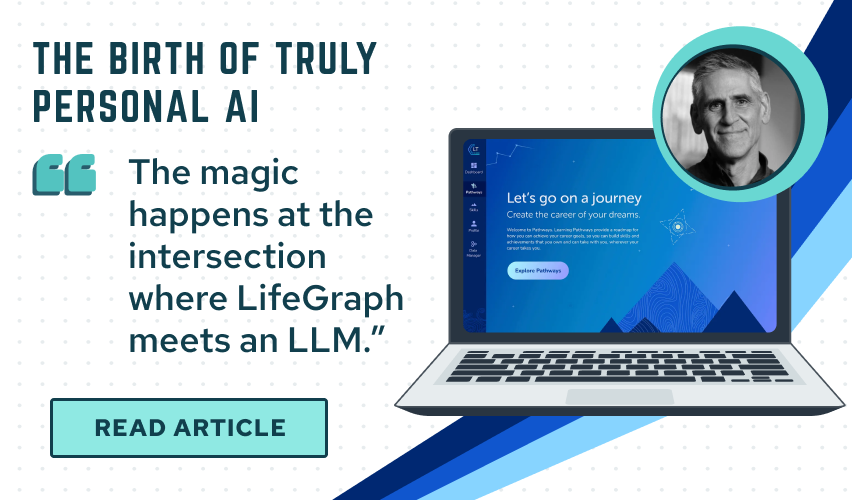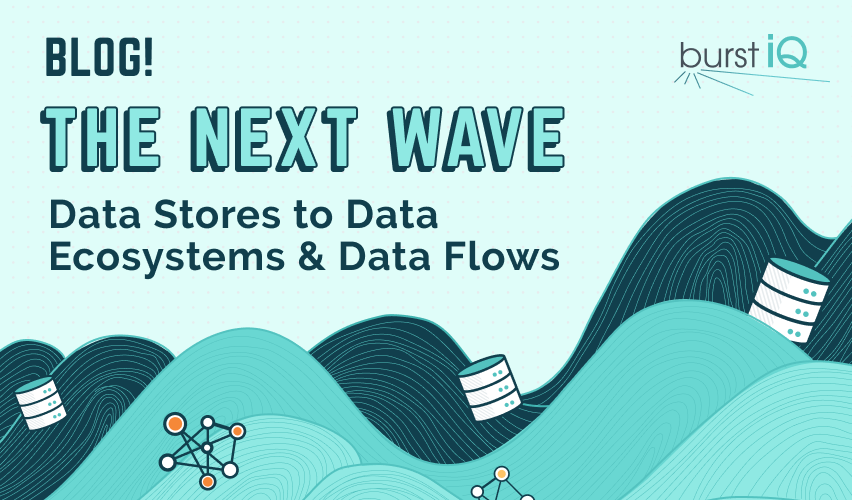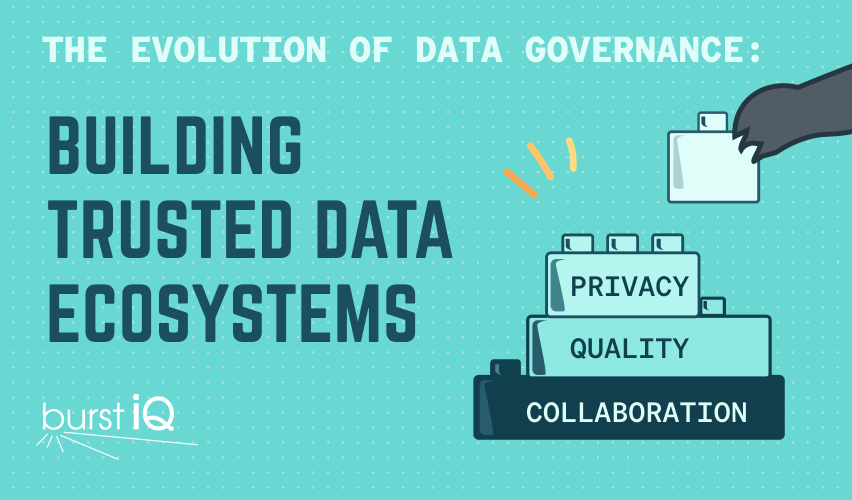The Evolution of the BurstIQ Platform
By Tyson Henry
Since its inception, BurstIQ has embraced blockchain technology. We’ve always believed that Blockchain networks enable the connections that can create communities, build markets, and drive positive change in the world of healthcare and a wide range of sectors beyond. The inherent security, combined with a sense of shared ownership makes them extremely appealing for a wide range of use cases.
It’s easy to see why so many inside and outside of the tech realm consider blockchain to be the future. The concept of distributed nodes with no centralized repository or control, immutable data elements, full ownership of assets, and provable transactions and recent improvements in scalability are all key features that we believe can positively impact users in the healthcare sector and beyond.
We understand that a delicate balance must be achieved between the benefits of blockchain features and the needs of enterprise-level data management. A technology as versatile and powerful as Blockchain cannot be leveraged effectively if its complexity creates barriers for developers and end-users. Fortunately, this is where BurstIQ excels. The BurstIQ platform combines the power of blockchain with easy-to-use secure REST API, a simplified and accessible configuration and the lowest technical barrier-to-entry possible.
BurstIQ is Evolving
When BurstChain™ was first conceived it was as an enterprise performing, big data, simple blockchain platform. We knew that it needed to be easy to implement in web apps, desktop and mobile applications, and bulk processing engines. It needed to lend itself equally well to a broad range of use-cases and industries.
Our initial approach was highly developer-centric, making use of JSON, REST APIs, database concepts, and (of course) decentralized blockchain features. But resting on our laurels was never an option!
BurstIQ is constantly striving for refinement and evolution to ensure that the platform continues to meet the changing needs and concerns of its users. The evolution of the BurstIQ Platform (which includes the AdaptiveIQ UI, BurstChain, Secure Data Grid, and all the other supporting services) will enhance the platform to engage many other types of users other than developers.
One of the key ways in which we’ve done this is to provide UI friendly tooling. This allows knowledgeable business process users to participate directly in the setup and maintenance of the platform without needing to rely exclusively on developers.
Now we’re delighted to announce the next step of our evolution. The addition of the new Data Dictionary Editor module to the AdaptiveIQ web app.
What are Data Dictionaries?
For those unfamiliar with Data Dictionaries, let’s take a brief look at what they do.
A Data Dictionary is a tool to assist developers. It tells the system the meaning behind the data that is being uploaded. It may be a string of numbers, a date, a serial number, a user ID number, or a currency. It also allows the developer to decide what the system should do with data that doesn’t match the system’s expectations.
The BurstIQ platform has always used JSON documents for data dictionaries. Developers have then been free to build a dictionary within a JSON document, then upload that document into their secure data zone. This makes it quicker and easier for future data to be defined correctly.
Cool. So What’s a Dictionary Editor?
A Dictionary Editor is a User Interface that allows users to create a data dictionary using a form, instead of needing to build the JSON document at the code level. Essentially, it democratizes Data Dictionaries and lightens the administrative loads of developers. With a Dictionary Editor, Data Dictionaries can be created by Business Analysts, Bioinformaticists, and Data Analysts as well as software engineers.
This increases flexibility for companies in the types of resources and personnel that can participate in the development and management of blockchain-based products and services.
Not only can this help to simplify operations, it can also improve clarity and efficiency. In many cases, the BAs and data analysts are more knowledgeable about how data should be defined in the system than in-house or outsourced developers.
Eliminating the Barriers to Performance
Now anyone can implement and update data dictionaries directly.
Managing the chain definition has always been possible via JSON and REST, but this UI will simplify the configuration aspects and speed up the development and maintenance of dictionary definitions. This can help users to eliminate the barriers to performance and drive efficiency. Now anyone can implement and update data dictionaries directly, rather than needing to translate data requirements for software developers to implement. A process that adds cycles, increases resource cost, creates time inefficiencies, and has the capacity for errors.
To quote BurstIQ Software Engineer Scott Campana;
”Our new Dictionary editor will allow users to quickly create, edit, and manage the structure of their data. Users can spend less time defining the structure of the data and can focus more on the data itself.”
BurstIQ UI Engineer, Lenny Reed emphasizes the shift towards visualizing data and eliminating potential inefficiencies.
“We are all here to get to work using our data, the last thing anyone wants to spend time on is setup and configuration. With that in mind, we are announcing our new Dictionary Editor. Simply put, it allows you quickly manage the structure of your BurstChain data in a visual way. You are then free to spend less time defining the structure (of the data) and more on what matters, the data itself.”
What Does the Future Hold?
Moving our platform beyond the needs of developers is integral to our plans for the future.
We will be building more tools like the Consent Contract Editor, the Dictionary Editor, and Client Preferences, all to enhance the platform experience.
Remember, of course, that all of these UI tools are also available as npm modules for users of the web app! We look forward to showing you what else we have in store.







